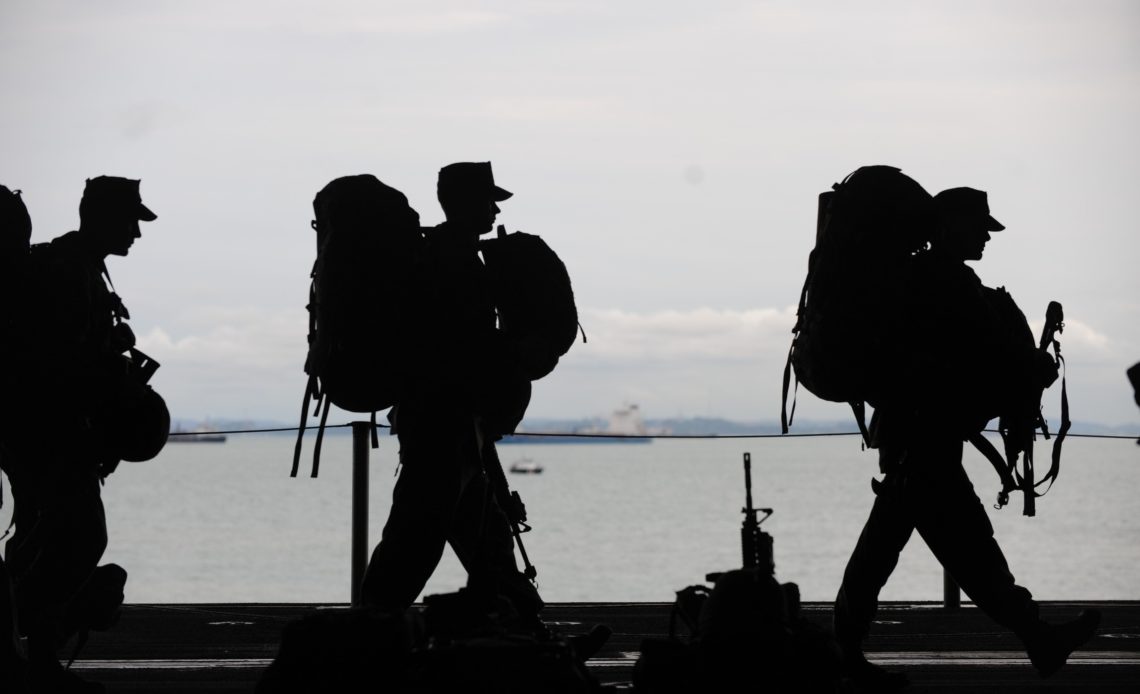
Military forces around the world are embracing 5G and private 5G networks. They are enthralled with the high speeds and low latencies, allowing them to quickly transfer vast amounts of data from bases, aircraft, and the battlefield, and the massive machine-to-machine capabilities that hybrid will enable them to keep better track of the billions of dollars of equipment purchased annually.
With nearly 500 operators worldwide investing in 5G and over 200 commercial launches serving a subscriber base forecast to be over 1.3 billion by the end of 2022, 5G is on pace to become the fastest-growing mobile technology in history. Similarly, the number of private networks is growing rapidly, from 656 in February 2022 to 889 in September 2022, a 36% increase in seven months. The defense and peacekeeping sector ranks fifth in the number of private networks per vertical, with 53 deployments.
What Will the Military do with 5G?
The same features that make 5G attractive to industry make it appealing to the military. The high speed and low latencies inherent in 5G would allow unmanned aerial vehicles (drones) to share HD video of targets. Every soldier can wear the equivalent of a smartwatch, allowing remote commanders to have up-to-the-minute location and data on the vital signs of everyone under their command. Geotagging can send alerts when personnel or equipment leave a designated area.
The high reliability of 5G makes it attractive for mission-critical applications, while the IoT will provide transportation, warehousing, and logistics data on an enormous scale. The speed and reliability of 5G will see changes to ISTAR (intelligence, surveillance, target acquisition, and reconnaissance), with massive data sets scoured for more actionable intelligence. Low latency will allow the military to use AR/VR for better training exercises and provide more information on the battlefield. Electronic warfare will benefit from 5G, as will the off hours for soldiers, who will be better able to connect with their families, play online games, or stream entertainment. Private 5G networks on bases will operate drones for security, operate AGVs, and use telemedicine to enhance the health of those on the base and lower transportation costs. Unmanned vehicles will deliver weapons and food to war zones.
5G Deployments on Military Bases
In October 2020, the US Department of Defense (DoD) announced they would award $600 million for 5G trials at five military sites, with public-private partnerships testing different aspects of the technology. These bases made up the DoD’s “Tranche 1” sites.
- Hill Air Force Base in Utah is investigating the impact of radar on 5G (and the reverse) and the viability of sharing spectrum with the local commercial industry.
- The Joint Base Lewis-McChord in Washington is looking into dynamic spectrum sharing and whether radar can co-exist with 5G in the mid-band region.
- The Marine Corps Logistics Base in Georgia is testing a smart warehouse in the mid- and high-band regions.
- Coronado Naval Base in California is looking into smart warehouse operations and how AR can be used in maintenance and training.
- Nellis Air Force Base in Nevada is testing a dual-use, military and commercial network and identifying 5G use cases for warfighting.
A further seven bases were named as “Tranche 2” sites, including the Joint Base Pearl Harbor-Hickam in Hawaii, which will use an aircraft maintenance hangar to improve communications capabilities and trial Foreign Object Detection (a safety and quality control concept). At the same time, telemedicine applications are being investigated at Joint Base San Antonio.
It’s not only the US deploying or testing 5G on military bases. The North Atlantic Treaty Organization (NATO) deployed a 5G test site in Latvia in 2020, and Norway trialed network slicing, comparing QoS for commercial and military-dedicated slices. A 2021 report from IEEE states that the “United States, Europe, China, and Russia are now integrating 5G technologies into their military networks.”
What’s Next for the Military and 5G?
There is a concern by some in the military that they are too slow to deploy new technologies such as 5G. Military forces are extremely thorough in testing new products and solutions, knowing that lives could be on the line if technology fails. However, long trial periods could quickly lead to obsolescence in a fast-paced ecosystem such as telecommunications.
Knowing this, the DoD created the Defense Innovation Unit (DIU) in 2015 “to help the U.S. military make faster use of emerging commercial technologies.” In 2021, the DIU developed a project to allow first responders in California to quickly create a hybrid private 4G/5G CBRS network whenever and wherever needed. If it works, “the project could eventually allow emergency responders to arrive at any site, including those outside of existing range, and access networked applications like push-to-talk voice, geolocation and live maps of their surroundings directly on their personal or government-issued mobile devices” within a specific geographic area.
The US DoD also has a new program, Innovate Beyond 5G (IB5G). “The DoD has a vital interest in advancing 5G-to-NextG wireless technologies and concept demonstrations,” said Dr. Sumit Roy, IB5G Program Director. “They have initiated three new projects to help advance wireless technologies. First is Open6G, which works with universities to investigate Open RAN in 6G systems. “Open6G will serve as the DoD’s hub for development, testing, and integration of trusted enhancements, supporting an industry and federal government NextG ecosystem pursuing 6G technology goals.” Second is the Spectrum Exchange Security and Scalability project with Zylinium Research, which will investigate dynamic spectrum allocation using blockchain to test data persistence, scalability, and robustness. Third, working with Nokia Bell Labs is a trial to scale Massive MIMO across various bands from MHz to GHz.
5G will continue to grow in use both in the civilian and military sectors, with new applications and functionality moving in both directions. John Cowles, director of engineering and technology at Analog Devices, said, “We’ve only seen the tip of the iceberg in terms of what 5G can do.”


